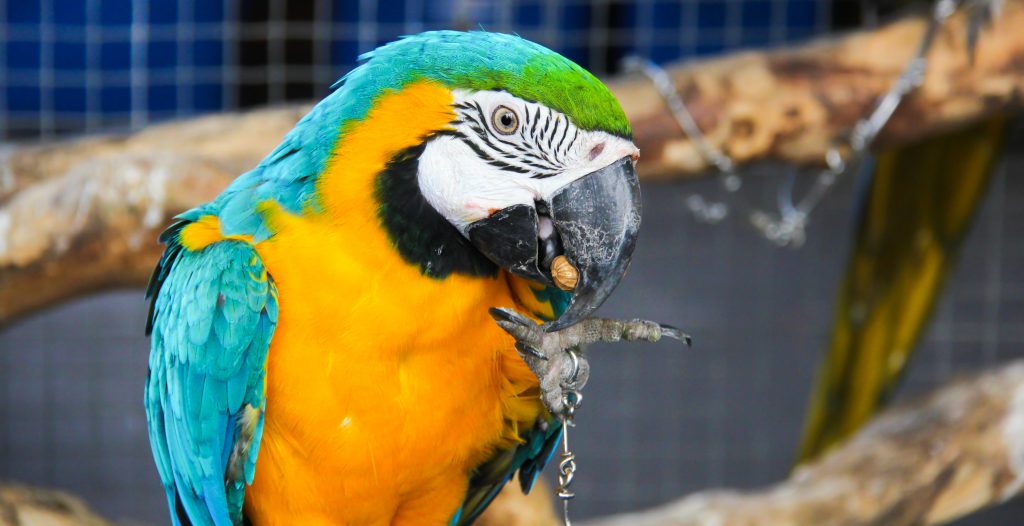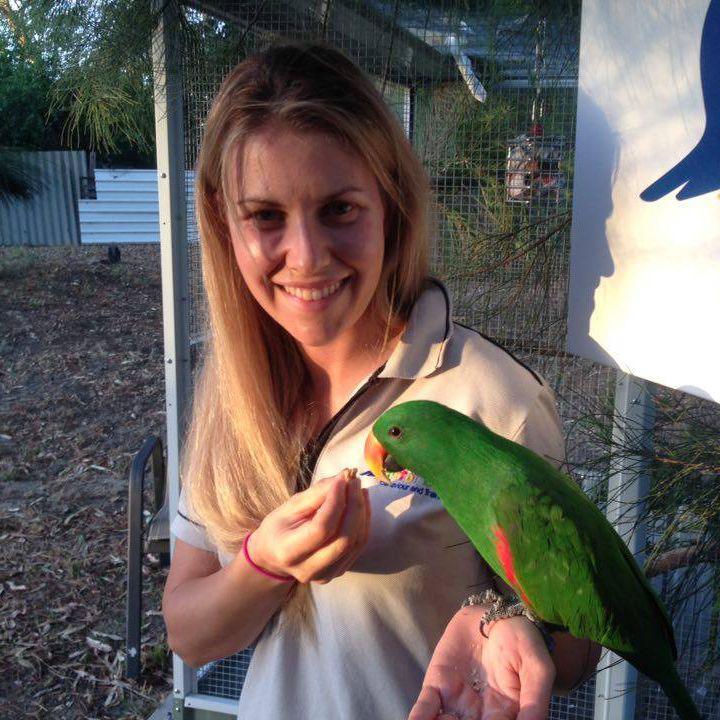Feeding Tips for Picky Parrots!
When offered a bowl of delicious, nutritious food, your companion parrot will (hopefully) be very happy to eat it – but more likely they will waste your efforts by only eating your favourite foods, then throwing the rest on the ground. Here are some easy steps you can implement into your daily feed routine to counter those common feeding problems.

Tip #1: Be aware of overfeeding
Offer less and they will eat better. Almost all parrot owners we have met through consultations over-feed their parrots without meaning to, sometimes by a stunning amount. Your bird, given the option, will malnourish itself just to get the high-energy fix (read high fat and sugar content), and will likely not eat a varied diet if it can just fill up on favourites. Some of the most conscientious and dedicated owners we have met have accidentally created nutritional issues in their parrots simply from feeding too much volume, of what would normally be a great diet.
As a loose rule of thumb, your larger parrot will eat around 10% of its body weight daily, and smaller parrots around 20%. So, for a 400g Eclectus parrot, the total daily consumption will be in the ballpark of 40g per bird. Since every parrot has a different energy use, you need to work out how much your bird(s) eats. Do this by weighing the dry food portion each morning and night to determine what your bird (or birds) have eaten that day. After a week of this, choose the largest amount eaten and stick with that. Offer just that amount daily, and your bird should have a teeny bit left over at the end of the day since you have the fresh food portion available as well (don’t worry about weighing out fresh food, offer about the same sized portion as the dry food). Adjust slightly as needed for different seasons, different energy use or if you are trying to encourage your bird to eat more fresh food! This is also the first step to converting your parrot to a pelleted diet if you are still feeding seed.
Tip #2: Make them work for it
An occupied parrot is a well-behaved parrot! Parrots have evolved to put a lot of effort into finding their food and have developed powerful problem-solving brains to cope with hidden and variable food sources. In captivity they may finish their bowl of food quickly, so the rest of the day – that in the wild would have largely been spent foraging – now means that they have time to get bored and get up to mischief or develop problem behaviours from chronic under-stimulation. Under-stimulation is often the common theme behind many common behavioural issues such as Feather Destructive Behaviour (FBD), screaming behaviours and anxieties. The answer is to make your bird’s food presentation a challenge for both you and them.
You can get seasonally available produce to mix up colours and flavours throughout the year or vary the presentation of common foods by chopping them differently or hanging them whole in a baffle cage, peg or another foraging toy. Your parrot’s strong beak means we should provide daily enrichment of browse (safe native vegetation) and foraging toys like blocks of hollowed-out wood, natural branches and other challenging objects that can replicate destroying a nut to find food.
There is no reason why you can’t sneak a small treat into the crevices and cracks of half-chewed toys each day to keep up their motivation to play with certain toys. As your bird gets faster at solving your foraging challenges, raise the expectation and make it harder. Purchase nuts in their shell on occasion to encourage natural cracking.
Tip #3: Be a little bit mean
Identify the top 5 foods that your parrot will consistently choose first and remove them from food bowls (sorry!). For example, our galah will consistently choose cashew, almond, walnut, corn, and sunflower seed out of a lineup before anything else. So, all those foods are now removed from his bowl and used only for training and foraging (about 5 – 10% of his daily intake).
This approach helps immensely with the activity levels and the motivation of your parrot to find food, even though they may have a whole bowl full of healthy pellets and veggies to snack on all day long. If your parrot is a bit overweight, then this approach will encourage exercise and help get them back to a healthy weight range. Reduced excess energy in the diet also helps manage problem behaviours, especially those associated with hormones and breeding! With this little extra motivation for those favourite and now scarce foods, you can be sneaky and blend up those favourite treats and sprinkle them finely over the not-so-favourite foods – this helps to get your stubborn eater to try out new food items.
Tip #4 Size does matter
Parrots are messy eaters. If your parrot takes a bite out of one thing and then throws it away, try cutting up your items smaller or putting them in different locations around the aviary/cage. This makes them work harder for the food and the hope is that they appreciate it more! Often less desired foods just get in the way of highly desired foods and get tossed out of the way, so chopping up small makes foraging and throwing a bit harder. Another great tip is to add a bit of soaked chia seed to your chopped fresh food. They are full of beneficial omega 3’s and encourage parrots to try more of the fresh portion as the seeds stick to the rest of the food.
By using these easy tips in your daily routine, your bird will be eating more variety, you will be wasting less, and you should have a more enriched parrot! For more tips or help with your parrot’s diet, contact us via www.parrotlife.com.au.
This article was written by Rachel Riley of Parrot Life

